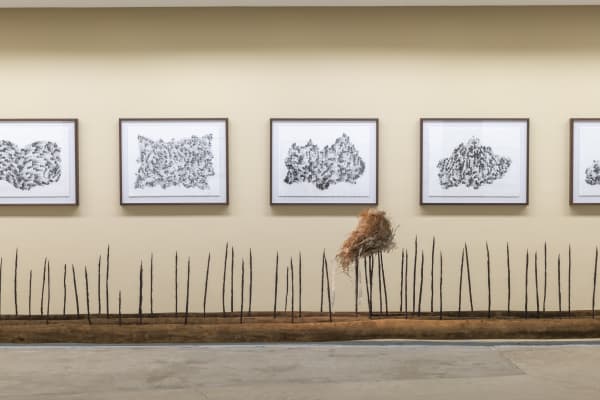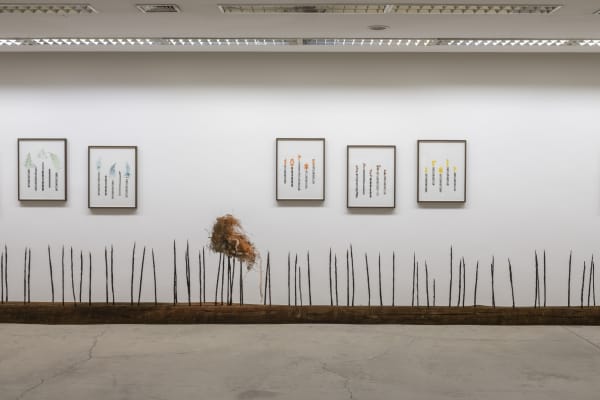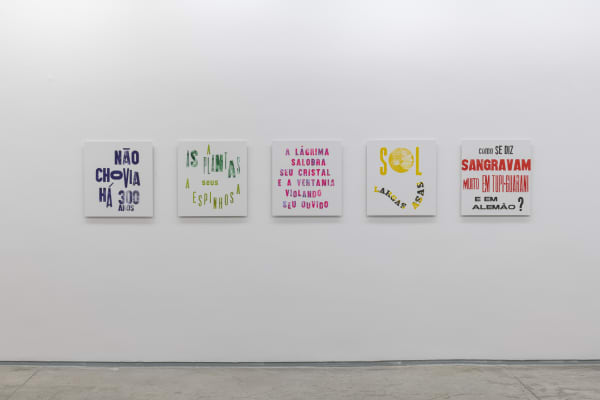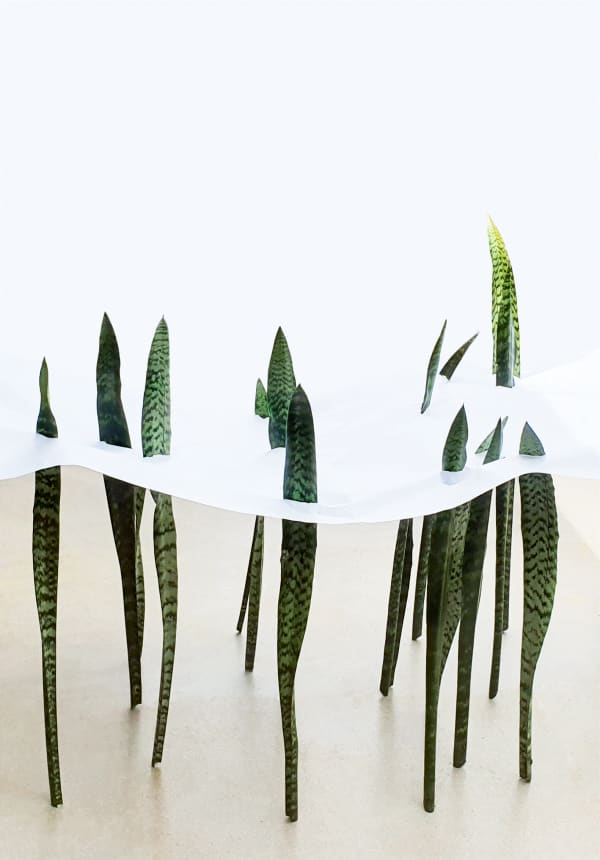The exhibition "Invento o mar" (Invent the Sea) occupies the first floor of Albuquerque Contemporânea and presents 28 new artworks by Laura Belém, the largest exhibition by the artist at the Gallery to date. With a career spanning 24 years and a body of work characterized by experimentation and multidisciplinary production, Laura presents artworks in the fields of sculpture, drawing, typographic engraving, and photography, extending to visual poetry and sound art, with a critical text by Bianca Dias.
The central core of the exhibition revolves around the relationship with nature, the earth and ecology, highlighting the interconnection between our bodies and the environment, through a poetic approach that does not intend to provide quick answers to the complex environmental issues that the planet is facing. The artworks invite us to look at the microcosm within the macrocosm and to reflect on the mark of the social body in relation to nature in contemporary times. The dialogue with the geography and the surrounding landscape is present through the spatial occupation and the choice of materials used for the works (iron ore, clay, leaves, seeds, stones, wood, etc.) that at the same time engender broader concepts.
The title of the exhibition "Invento o mar" was taken from the song "Cais", a partnership between Ronaldo Bastos and Milton Nascimento, from the album Clube da Esquina, from 1972. For Laura, this song with a great poetic charge places the idea of solitude side by side with that of reinvention, dreaming and expansion; "I wanted to be happy / I invent the sea / I invent the dreamer in me". The song ends with a melody that seems to dialogue with the irregular topography of Minas, with high and low planes, culminating in a certain drama towards the unknown or something non-assertive. The exhibition itself can be understood as a field of inventions, with the projection of subjectivities, metaphors, and an open and non-linear narrative.
In contrast to a time of urgency and an excessive reduction of human experience to the digital world, the exhibition invites us to be present, to perceive a more expanded time and that which lies between one thing and another - the mark, the impression, the trace, the tactile matter that has been diluted in our daily lives mediated by the media, and also of the immanent in the midst of the transitory; the idea that the same Consciousness permeates everything and that there is a divine essence common to all bodies and all matter.
"Invento o mar" invites us to dive into these subjectivities, to reinvent perception and to build new poetic and social relationships with nature, the environment and Being.
























